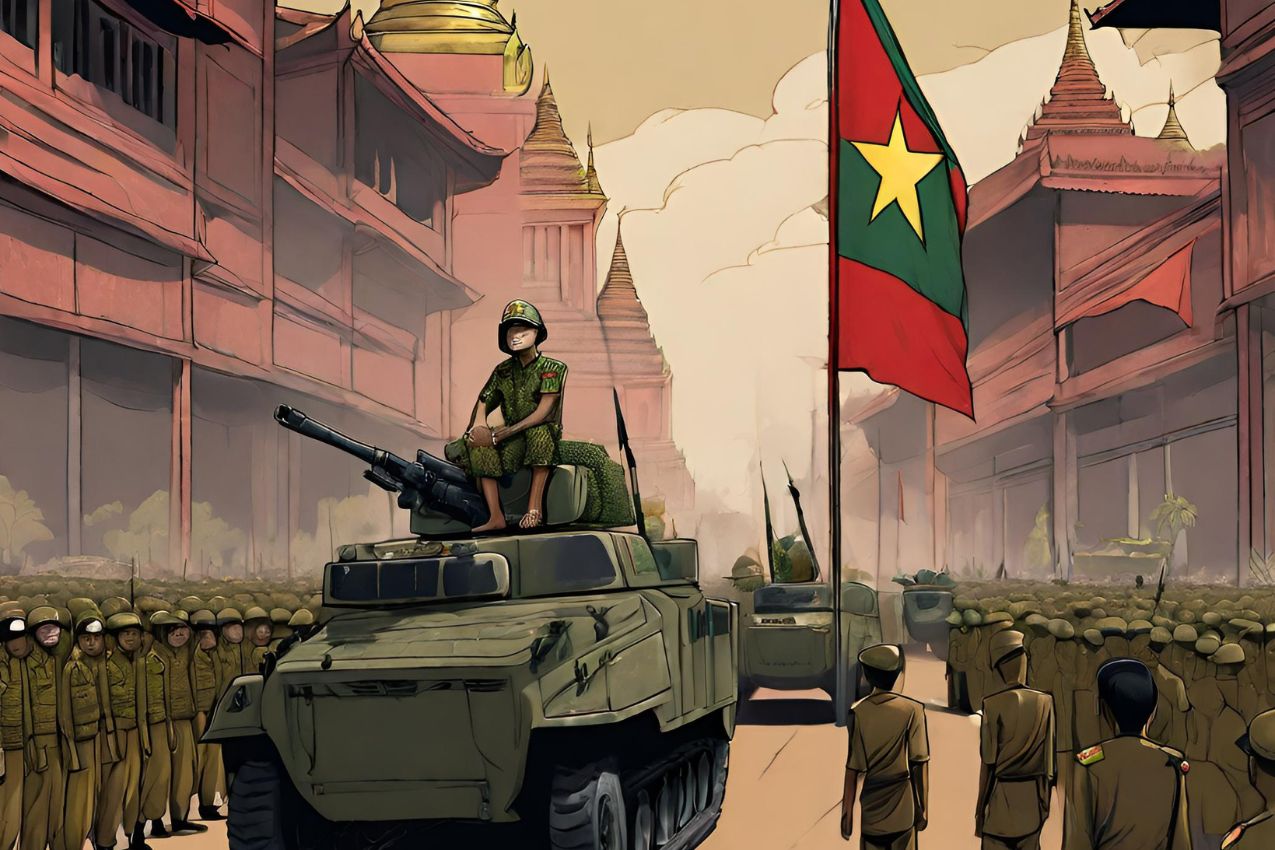
This past February marked the third year of the Myanmar coup d’état, but the ALL Forum was powerless to do anything about it. In 2022 and the year after the coup, we organized webinars condemning not only the coup in Myanmar, but also the ruthlessness of Xi Jinping’s regime in China, which has trampled on democracy and nearly dismantled the diverse and vibrant civil society Hong Kong had built over the last century. We struggled to get speakers from Myanmar and Hong Kong then, but not nearly as much as we did this year.
According to friends from Myanmar around me, contrary to the junta’s expectations, public resistance has not abated, and the armed struggle from the National Unity Government (NUG), the People’s Defense Force (PDF), civilian forces including youth, and ethnic armed groups against the military regime has intensified. Of Myanmar’s 330 towns, 226 are reported to be fighting, meaning that more than 70 percent of the country is in a state of war. However, this also means that much of the population of Myanmar has been displaced from their homes, and suffering from psychological trauma and physical pain. Adding to their anxiety is the military’s recent reinstatement of forced conscription.
According to the United Nations, in February 2024, the Myanmar military implemented a forced conscription law that has caused great fear and intimidation for many Myanmar citizens, especially young people. The law states that men aged from 18 to 35 and women 18 to 27 can be recruited into the army, as well as “professional” men and women between the ages of 45 and 35 respectively. The plan is to enlist 5,000 people per month starting in April in 2024, and anyone who evades military service or helps others evade military service will face up to five years in prison.
The law affects an estimated 13 million young men. That’s a staggering number. This has left families with young men in a state of anxiety that, unless the war is over, they will one day in the near future be called to the battlefield. Another way to look at it is that it shows how much the military is losing the war and losing hope. In other words, it shows that the Myanmar military’s need to recruit new troops in response to its accumulating losses has become a major issue that will determine the outcome of the war over the past three years.
However, this has left young men and their families on edge, and in recent months there have been reports of young men being abducted from the streets of Myanmar’s cities and forced to join the military. As more people flee across the border to avoid recruitment, it is also expected that Myanmar’s neighboring countries, such as Thailand, will see a surge in refugees from Myanmar. So now, more than ever, the international community is being called for urgent action to pressurize and isolate the regime and protect the people of Myanmar. First and foremost, there is an urgent need for a strong response from the international community, including Catholic churches in Asia, to calls for humanitarian assistance, including aid, and more support for leaders committed to democratization in Myanmar.
At the World Forum of Theology and Liberation (WFTL) in Kathmandu, Nepal, in February in 2024, the massive murder situation in Gaza was so dire and overwhelming as a “sign of the times”. It was so much so that I as one of the participants in the conference could hear only a few voices about the massive killings in Myanmar that I was worried if the attention of the world was being drawn away from it. Now, as we approach Easter, I am reminded of their suffering, death, and resurrection. Whether in Gaza or Myanmar, Jesus is being killed again and again in the midst of massacre, and it seems difficult to speak of his and the people’s resurrection until it ends.
At this juncture, the natural and appropriate question of the “absence of divine justice” or “absence of a just God” for the deaths of the innocent, especially women and children, is a theological dilemma that contemporary theology does not adequately answer, but it is a bloodshot cry and a desperate reality of the people in the killing fields. The eschatological vision of “endure the pain of today and hope for tomorrow,” even with its hermeneutical diversity, does little to comfort or heal the victims and their family or inspire realistic alternatives. The resurrection of the people in Gaza and Myanmar, along with Jesus, must be realized not in the future but in the ‘here and now.’ Jesus’ cross becomes their cross, and ours, when we follow his call even unto death, when we choose to fight for the killed and victimized alongside the cross, and when we support and live out their struggles in our daily life as a ‘church militant’ like what Pope Francis suggested as many ways as we can. Jesus rises again and again with us, not just at Easter, but right here and now.
May God hear the bloodshot cry of people in Palestine and Myanmar and protect them! Amen.